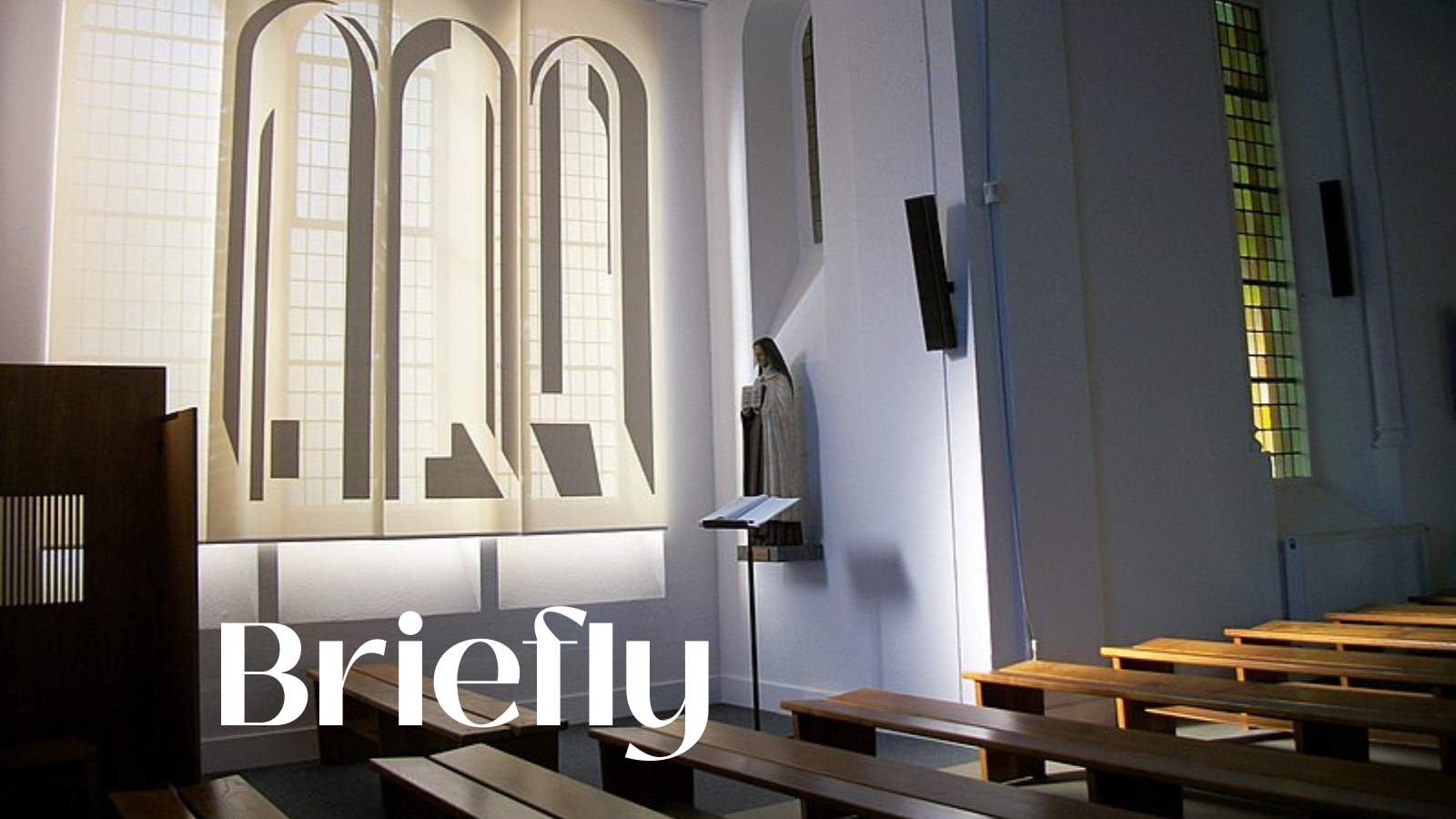The young nun's spiritual autobiography was so pedestrian, prioresses at other Carmelite convents rolled their eyes and were embarrassed.
When the original printer delivered 2,000 copies of the autobiography to the dead nun's convent in 1898, a sister exclaimed, "What will we ever do with all of these?"
By 1910, nearly 50,000 copies had been sold.
By 1915, 200,000 copies.
By 1950, millions of copies had been sold and the book translated into about 40 languages.
And St. Therese Lisieux had become the most popular saint in history, possibly second only to St. Francis of Assisi.
St. Therese was a Postmodernist
What the frick happened? Why would a simple little book by a nun scarcely noticed by her own religious sisters catch fire like that?
It's the same reason people smashed chairs and stormed the doors to hear Sartre. The same reason Camus' books sold briskly.
Modernity was the era of suffocating essence: of definition, categories, qualities, measurement, logic, ambition, and other things valued by the left hemisphere. Post-modernity is the era of existence: of the nameless, irrational, intuitive/counter-intuitive, paradox, and other things appreciated by the right hemisphere.
St. Therese's "Little Way" resonated strongly with the post-modernist twentieth century, so much so, that I like to think God sent her message in 1898 specifically as a guide to our post-modern times.
I also think she may have been sent as a counterpoise to that other wildly popular existentialist thinker, Nietzsche, who died in 1900 and whose works soared in popularity at the exact same moment that Therese's books were selling.
It's not a coincidence.
They were both existentialists who gave lifelines to a culture in the stranglehold of essence.
Existentialism is the Attempt to Find the Tao
I believe St. Therese is properly labeled an "existentialist," right there with those famous ungodly men: Nietzsche, Sartre, and (at least early on) Camus.
But also right there with those godly men: Kierkegaard, Dostoyevsky, and Buber.
Existentialism isn't a religion. It's a disposition. It's a disposition that eschews the complexity of essence in favor of the simplicity of existence.
It eschews the rationality of prosaic thinking for the irrationality of poetic thinking.
Existentialism seeks to shed essences so we can shrink the core of our being: the simple act of existence.
The Tao.
St. Therese of Lisieux was an Existentialist
St. Therese was a nun who died young of tuberculosis, but as she was dying, she wrote her autobiography (click here for a brief biography).
She used the autobiography to describe her mental world, which she called “the little way of spiritual childhood.” Today we simply call it the “Little Way” or the “Little Way of St. Therese.”
The Little Way is a method of living that undertakes every task–especially the smallest and least noticed–with no thought to oneself. A person traveling The Little Way anonymously addresses whatever comes up during the day, but without ever thinking about the rewards of addressing such things.
This is how Clare Booth Luce explained it:
“Are not the lives of almost all of us made up of little things? But for most people a dozen annoyances, bothers, anxieties, frustrations, harassments a day add up to aspirins or martinis, to ulcers or neuroses or breakdowns–even to suicide. Therese made them add up to sainthood. Stooping a dozen times a day quietly–indeed furtively–she picked up and carried the splinters of the cross that strewed her path as they strew ours. And when she gathered them all up, she had the material of a cross of no inconsiderable weight.” Saints for Now
She did the little things in life without thinking about them–serving and praying, but never thinking about her service and prayer, and never pausing to think about her good works. Just doing.
Therese's Little Way is an existentialist way. In the words of Hans Urs von Balthasar in his study, Two Sisters in the Spirit:
“The term existential theology affords the best description of the truth that Therese is realizing in her own life and being.”
The Little Way revolves around what George MacDonald called “the holy Present.” Her life was lived without looking backward or forward. She solely wanted to carry out God's will as it was revealed to her from second to second. With this remarkable narrowness of temporal concerns, she intertwined a thorough self-forgetfulness that undertook the tasks of the immediate present with absolutely no self-regard. She did not step back to look at herself at all, never separated herself from the concrete reality that she found in the here and now.
It is an existentialist approach because it eliminates mental concerns about oneself, the concerns that cause us to think about ourselves through the essences valued by our left hemispheres.
In Therese's case, these essences fell off like shackles from a freed prisoner, and she found herself totally absorbed in the heart of Jesus.
She found herself, in other words, totally absorbed in the Tao: her right hemisphere lit up and received the Tao's signals, allowing her to operate through convent life (which is far more fraught than people think) with exquisite peace.
Her right hemisphere took the Tao signal and lived without the essences valued by the left hemisphere. Instead, her right hemisphere dispatched her left hemisphere to do its work well but calmly. She accepted the most menial work, she put up with petty religious sisters and a neurotic prioress, inconveniences didn't bother her, and she shrugged off the tuberculosis that would kill her at age 25.
There are impressive parallels between St. Therese's Little Way and what is probably the most popular existentialist philosophy of the twentieth century, Zen.
But that'll have to wait until next week.











